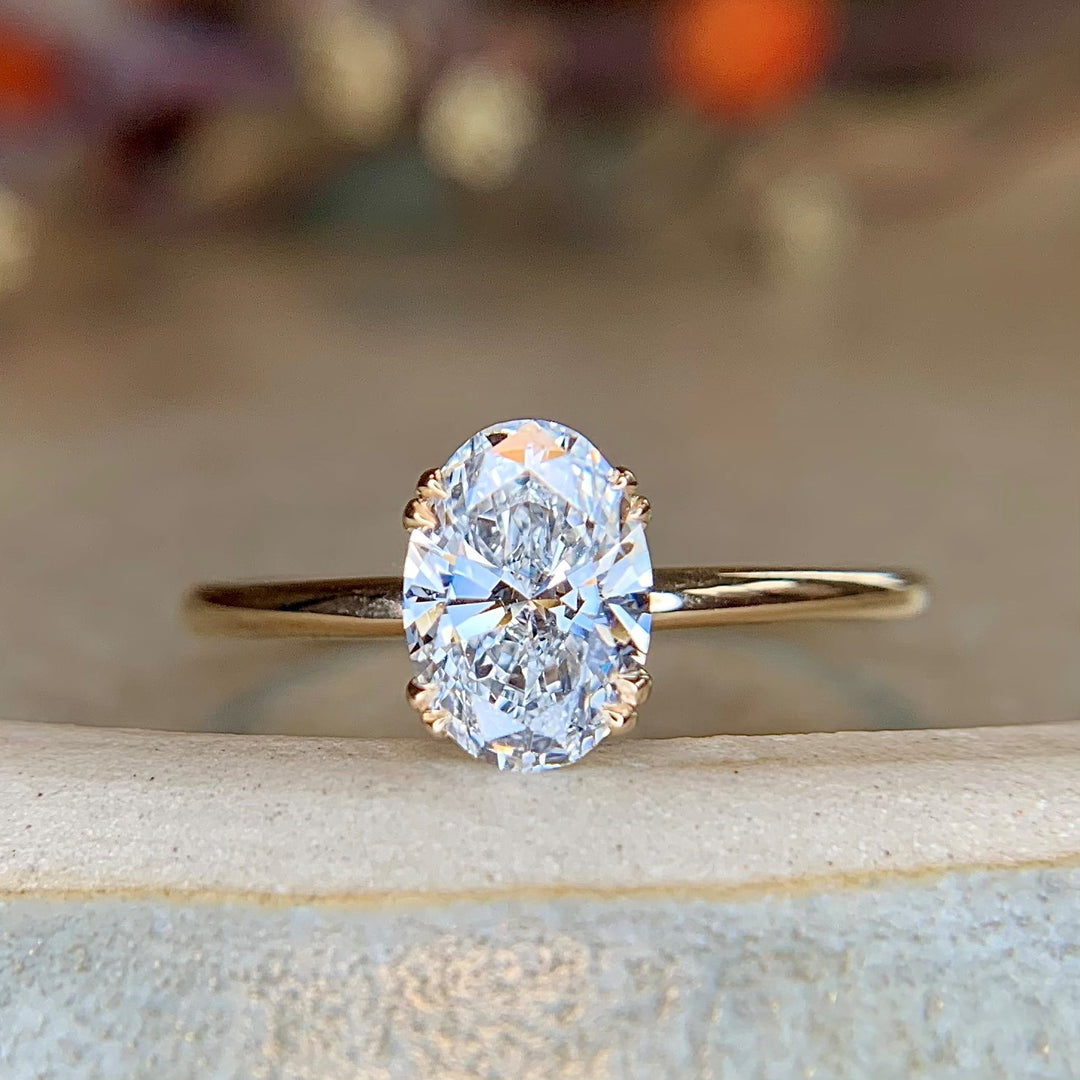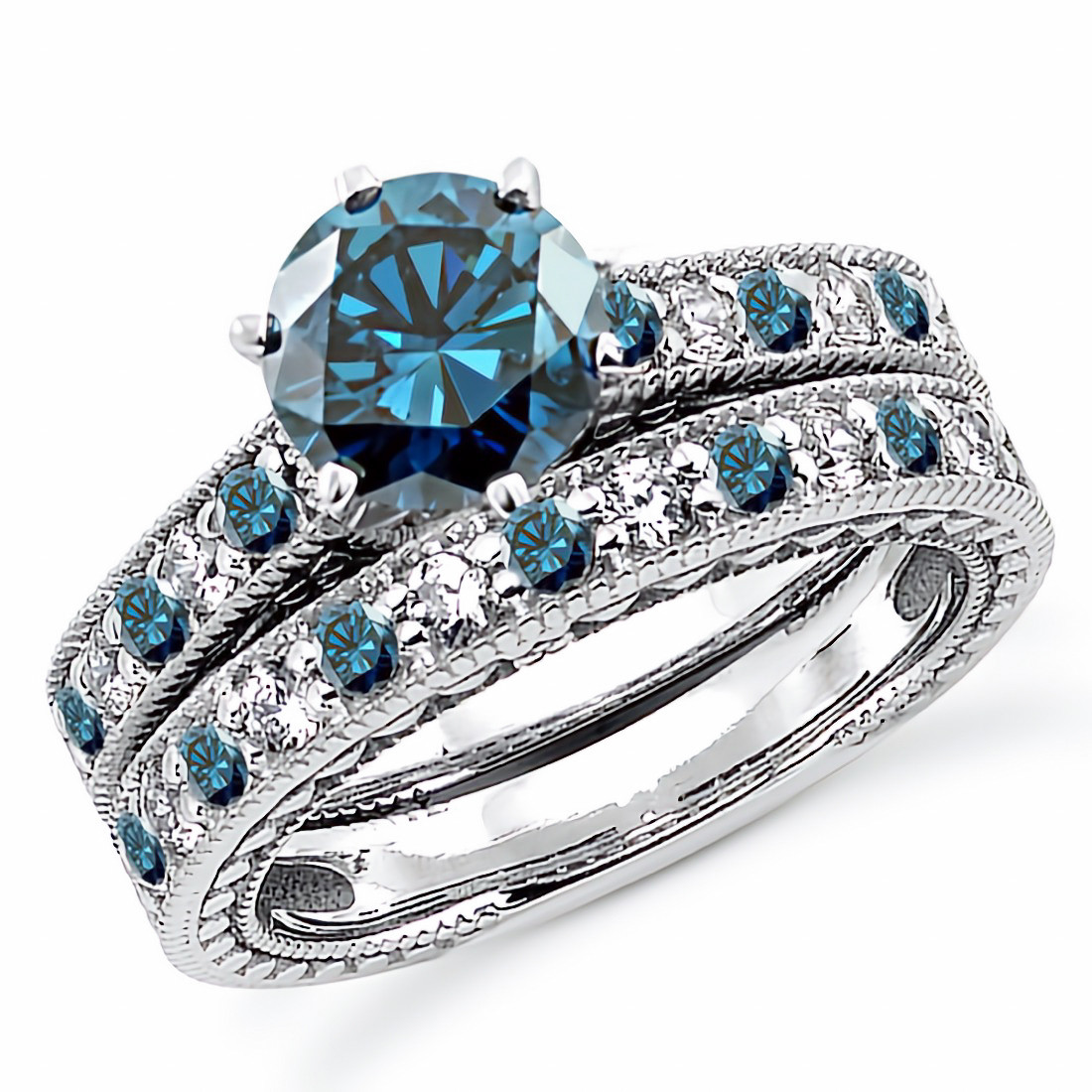lab grown diamond engagement rings: A Budget-Friendly Path to Big Sparkle
Wiki Article
Why Laboratory Grown Diamond Engagement Rings Are the Perfect Option for Eco-Conscious Couples
Lab-grown Diamond engagement rings provide an engaging alternative for pairs who prioritize sustainability. These diamonds supply a striking option to standard mined rocks, considerably decreasing environmental damage. They are developed making use of advanced strategies that assure both quality and luster. As recognition of moral sourcing grows, many couples are reconsidering their options. What ramifications does this shift have for the future of the Diamond sector?

The Ecological Influence of Typical Diamond Mining
Although Diamond mining has actually long been celebrated for its allure and eminence, the environmental effects of conventional mining techniques are progressively concerning. The removal of rubies often entails considerable land disturbance, resulting in logging and habitat loss for many types. In addition, the process eats huge amounts of water, which can diminish local sources and adversely impact bordering communities. Toxic chemicals made use of in mining procedures can contaminate close-by water resources, further threatening both human populaces and wild animals.In addition, the carbon footprint connected with carrying mined diamonds includes in the total environmental toll. The hefty equipment and devices required for mining procedures add significantly to greenhouse gas discharges. As recognition of these issues grows, numerous consumers are starting to doubt the sustainability of conventional Diamond sourcing. This shift in viewpoint highlights the urgent need for more eco-friendly options, such as lab-grown diamonds, which guarantee to decrease the eco-friendly influence while maintaining the charm and value of Diamond precious jewelry.
The Refine of Producing Lab-Grown Diamonds
Lab-grown diamonds are produced through 2 main techniques: High Pressure High Temperature Level (HPHT) and Chemical Vapor Deposition (CVD) The HPHT procedure simulates the natural problems under which rubies form in the Earth's mantle. It involves subjecting carbon to extreme pressure and temperature, leading to the formation of carbon atoms right into Diamond structures. In comparison, the CVD technique enables the development of rubies in a controlled setting. This method utilizes a gas combination containing carbon, which is stimulated to form plasma, making it possible for carbon atoms to down payment onto a substratum and expand layer by layer right into Diamond crystals.Both methods generate rubies that are chemically and physically the same to natural rubies - lab grown diamond engagement rings. The option of approach often depends on the desired features and dimension of the final treasure. This cutting-edge strategy to Diamond creation not just provides a lasting alternative but additionally permits higher transparency in the sourcing of materials
Quality and Radiance of Lab-Grown Diamonds
While lots of might assume that lab-grown rubies differ in high quality from their all-natural counterparts, they actually exhibit similar luster and aesthetic charm. Lab-grown rubies are created utilizing innovative modern technology that duplicates the natural conditions under which diamonds create, causing stones that have identical physical and chemical residential or commercial properties. These diamonds achieve the very same phenomenal clarity and shade grading as mined rubies, making them tantamount to the naked eye.In regards to radiance, lab-grown diamonds frequently display exceptional light efficiency as a result of their precision-cut facets. The rigorous quality control during production warranties that these diamonds satisfy high requirements, improving their aesthetic attraction. In addition, they are readily available in a selection of sizes and shapes, enabling couples to find the ideal ring to match their personal design. Ultimately, lab-grown diamonds use an elegant mix of appeal and high quality, making them an enticing option for involvement rings.
Ethical Considerations in the Diamond Market
As consumers come to be progressively conscious of the ethical implications surrounding Diamond sourcing, the conversation around the Diamond industry has shifted noticeably. Issues about conflict diamonds, frequently referred to as "blood diamonds," have triggered phone calls for better openness and liability in mining methods. These rubies are mined in war areas and marketed to finance armed problem, raising serious moral inquiries for consumers. In addition, the environmental effect of conventional Diamond mining has actually come under analysis, with concerns such as habitat damage and water contamination frequently highlighted.In action, lots of have turned to lab-grown rubies as an extra moral alternative. These stones are developed in regulated atmospheres, eliminating the threats associated with mining. Consequently, lab-grown diamonds interest customers looking for to make accountable options that align with their worths. The growing need for ethical methods remains to reshape the Diamond industry, pushing for humane and lasting sourcing methods.
Cost-Effectiveness of Lab-Grown Diamonds
Lab-grown rubies provide an engaging option for consumers seeking affordable engagement rings - lab grown diamond engagement rings. Priced substantially lower than their all-natural equivalents, they provide outstanding worth for cash without giving up high quality or appearance. This cost makes Bonuses lab-grown diamonds an appealing choice for budget-conscious couplesLower Rate Point
Lots of pairs are finding that choosing lab-grown Diamond engagement rings can significantly decrease their total costs without giving up quality or charm. These diamonds usually set you back 30% to 50% less than their mined counterparts, making them an attractive choice for budget-conscious consumers. The cost advantage occurs from lower production expenses and an extra reliable supply chain, which eliminates the expenses associated with mining. As an outcome, pairs can purchase bigger rocks or more detailed settings, enhancing the total aesthetic of their rings. This price not just enables a more customized selection yet also straightens with the worths of eco-conscious pairs who prioritize sustainability while staying monetarily savvy. Lab-grown diamonds offer a best mix of beauty and economy.Value for Money
The cost-effectiveness of lab-grown diamonds extends beyond their initial price, offering phenomenal value for money. Unlike natural diamonds, lab-grown alternatives can be up to 40% much less pricey while preserving the very same physical and chemical homes. This cost allows couples to buy larger or higher-quality rocks without exceeding their budgets. The resale worth of lab-grown rubies is progressively boosting, making them an extra practical alternative for future economic factors to consider. Additionally, lab-grown rubies often feature reduced ethical and ecological costs, giving couples with assurance. By choosing lab-grown diamonds, eco-conscious couples not just conserve money but additionally contribute to sustainable practices, boosting their overall value recommendation content in the precious jewelry market.
Modification Options for Lab-Grown Involvement Rings
Just how can pairs assure their interaction ring shows their distinct love story? Customization alternatives for lab-grown Diamond engagement rings provide a suitable service. Couples can pick from different Diamond shapes, including round, princess, or oval, allowing them to select a style that resonates with their personal aesthetic.Furthermore, they can select the setup-- be it solitaire, halo, or vintage-inspired-- making sure the ring matches the Diamond's brilliance. Steel options, such as white gold, yellow gold, or rose gold, additionally enhance personalization, dealing with specific preferences.
Additionally, couples can incorporate significant inscriptions, adding a nostalgic touch that symbolizes their bond. With these considerable customization alternatives, lab-grown Diamond interaction rings not just embody a pair's love yet additionally show their values, making them an ideal selection for eco-conscious collaborations. Eventually, these rings become a true representation of their distinct trip together.
Regularly Asked Inquiries
How Do Lab-Grown Diamonds Compare to All-natural Diamonds in Worth?
Lab-grown diamonds normally cost 20-40% much less than natural rubies, offering comparable top quality and look. Their lower price factor makes them an attractive choice, especially for budget-conscious customers looking for lasting and ethical options in fashion jewelry.
Are Lab-Grown Diamonds Much More Sturdy Than Natural Diamonds?
Lab-grown rubies have the exact same physical and chemical residential properties as natural diamonds, consisting of longevity. Both kinds score a best 10 on the Mohs scale, making sure that lab-grown rubies are similarly resistant to damaging and damage.Can Lab-Grown Diamonds Be Resold Conveniently?
Lab-grown diamonds can be re-selled, yet their market demand varies contrasted to all-natural rubies. While some buyers appreciate their honest origins, others may favor all-natural choices, possibly impacting resale worth and convenience of deal.What Are the Care Instructions for Lab-Grown Diamonds?
Lab-grown diamonds call for normal like preserve their brilliance. Cleansing with light soap and warm water, using a soft brush, and preventing harsh chemicals will certainly help preserve their shimmer and honesty for many years ahead.Are There Any Type Of Qualifications for Lab-Grown Diamonds?
Lab-grown rubies can be accredited by reputable companies such as the Gemological Institute of America (GIA) and the International Gemological Institute (IGI) These certifications ensure adherence, quality, and credibility to market requirements for lab-created gemstones.Both approaches produce diamonds that are chemically and literally identical to natural diamonds. Lab-grown diamonds are developed utilizing advanced technology that duplicates the all-natural problems under which diamonds Get More Info create, resulting in stones that have the same physical and chemical buildings. Lab-grown rubies typically cost 20-40% less than all-natural diamonds, using comparable quality and look. Lab-grown rubies possess the exact same physical and chemical buildings as natural diamonds, consisting of toughness. Lab-grown rubies can be re-selled, but their market demand differs contrasted to natural diamonds.
Report this wiki page